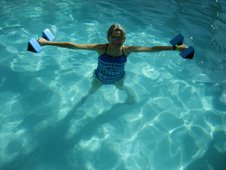Is It A Cold Or the Flu? How to Tell the Difference
Here's a chart to help you figure out which one you might have. Either way, doctors advise getting an annual flu shot.
As the influenza epidemic sweeps through the country, you may be wondering if it’s the flu or a cold causing your sniffles.
One major difference between the two is that there is a vaccine for the flu, a disease that can have life-threatening complications
“An annual flu vaccine is recommended for everyone over the age of six months,” said a spokesperson for the Los Alamitos Medical Center. “It’s especially important for those at risk of developing serious complications from the flu to receive the vaccine.”
Unfortunately, there’s no vaccine for the common cold, but you can figure out whether you’ve been infected by the human rhinovirus (the cold) or influenza.
Both are highly contagious and have similar symptoms and seasons.
If you haven't been vaccinated and feel sick, or if you have been vaccinated—the flu shot isn’t always 100 percent effective—and you feel sick, here's a chart that may help you tell the difference between cold and flu.
Flu
|
Common Cold
|
Sudden onset of symptoms. Can be severe.
|
Mild symptoms
|
Fever between 102° F and 104° F. Lasts three to four days
|
Fever below 102 degrees
|
Muscle aches
|
Some aching muscles
|
Headache
|
Headache
|
Sore throat
|
Loss of appetite
|
Very tired and weak. Some people feel extremely exhausted
|
Stuffy nose
|
Cough that can be severe
|
Chills and sweats.
|
Nausea, vomiting and diarrhea (more common in children than adults)
|
Chart Courtesy Los Alamitos Medical Center
You can get the flu the same way you get the cold—the virus lands on surfaces like counters, elevators buttons, stair rails or telephones. People get the virus on their hands and can then infect themselves when they touch their eyes, nose or mouth.
According to the Los Alamitos Medical Center, some people are more at risk of developing complications of the flu. These include young children and people older than 50. Other at-risk groups include:
- Residents of nursing homes or chronic care facilities
- People with chronic disorders such as diabetes, heart, lung or kidney disorders
- People with a weakened immune system including those with HIV, leukemia or taking medications following an organ transplant
- Women who are pregnant and in their second or third trimester
- People who work in a healthcare facility
If you fall into one of these groups and develop symptoms of the flu, call your doctor immediately. If you’re not one of those people in the at-risk group, the best advice is to get plenty of rest, drink lots of liquid and avoid using alcohol and tobacco.
You can take over-the-counter medicines to relieve symptoms such as fever, muscle aches, nasal congestion and cough.
CAUTION: Do not give aspirin to children or teenagers who have flu-like symptoms, especially a fever. In some cases, this has caused a serious complication known as Reye’s syndrome.
If you develop complications including trouble breathing, a very high fever, a severe sore throat, a cough that produces a lot of green or yellow mucus, or you feel faint, call your doctor.
Anti-viral medications may be prescribed for cases of the flu. These medicines may shorten the time you feel ill. Some of these medications only work with certain types of influenza viruses. To be effective, these need to be taken no later than 24 to 48 hours after you first develop symptoms.

